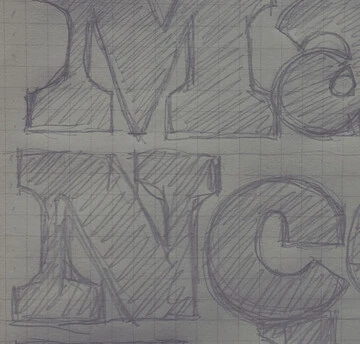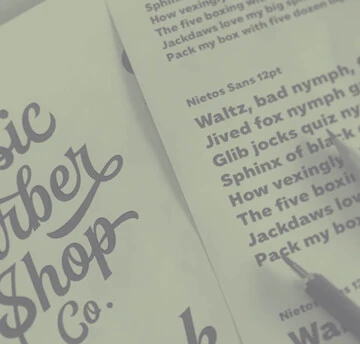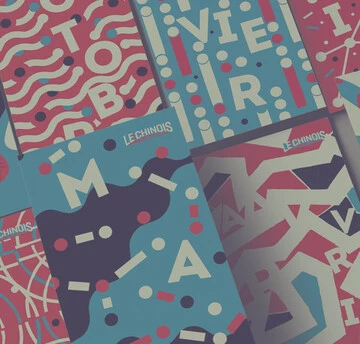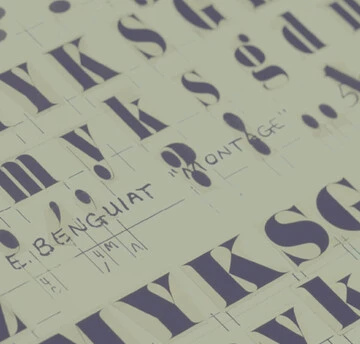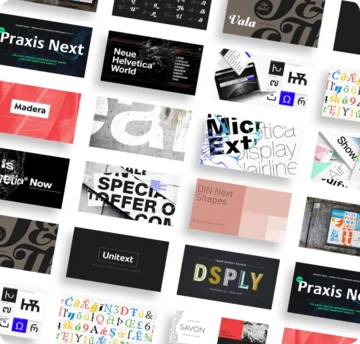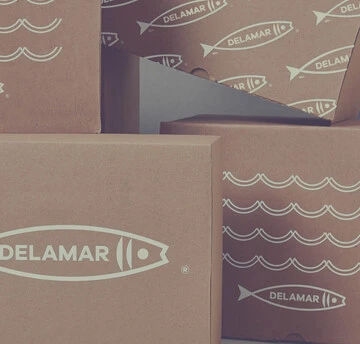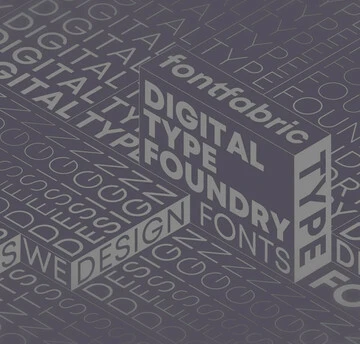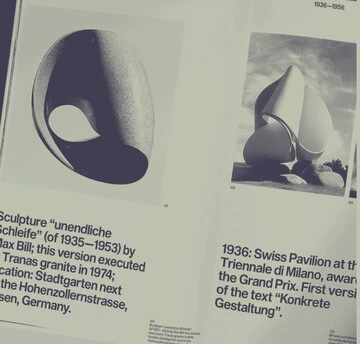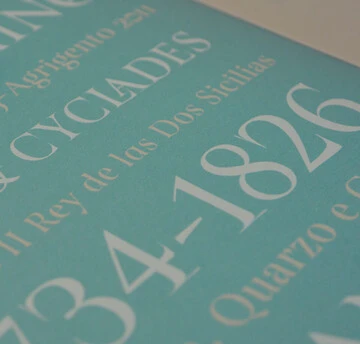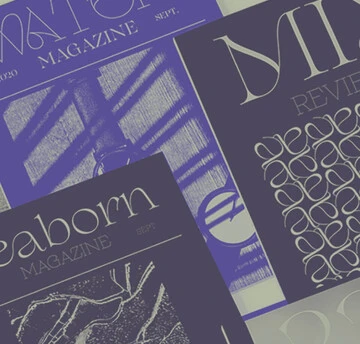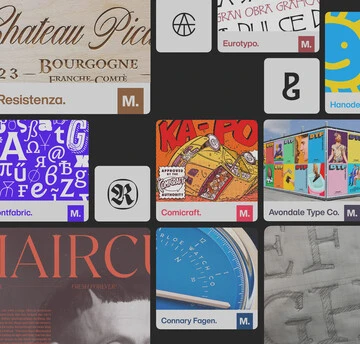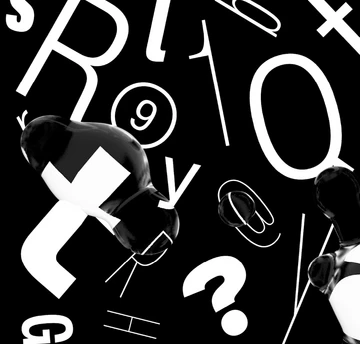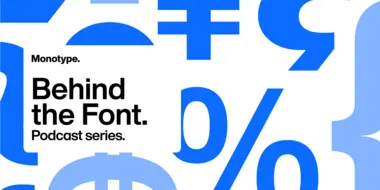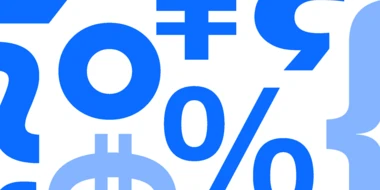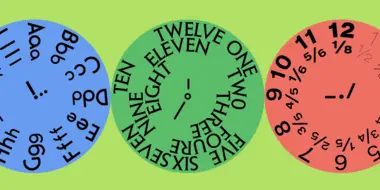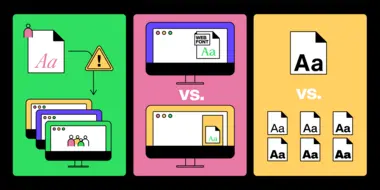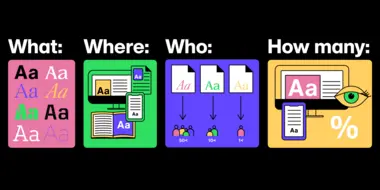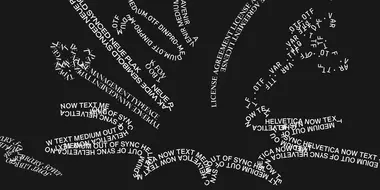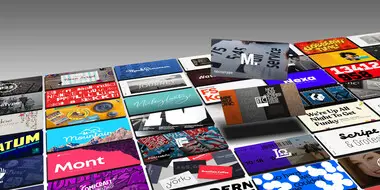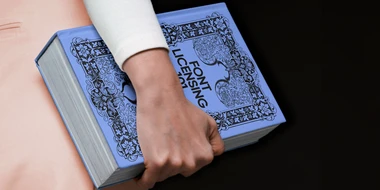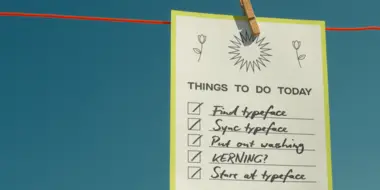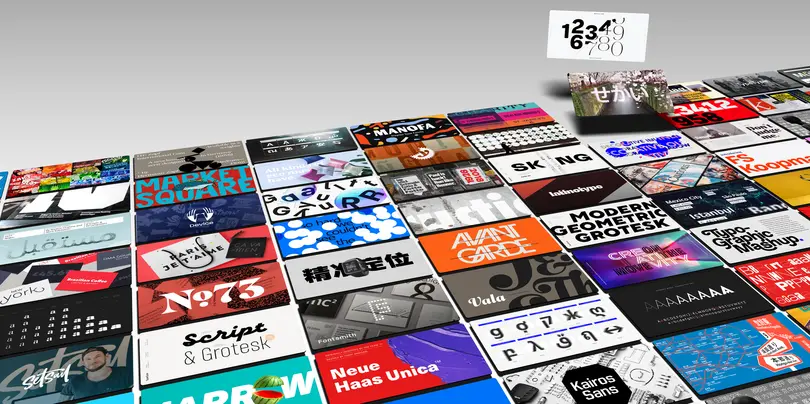Font licensing, simplified.
The basics of font usage for brands and creatives.
Have a question? We can help.
Font licenses don’t have to be complicated. Drop us a line today—we’d love to help make fonts simple for your organization.
Why do I need a font license?
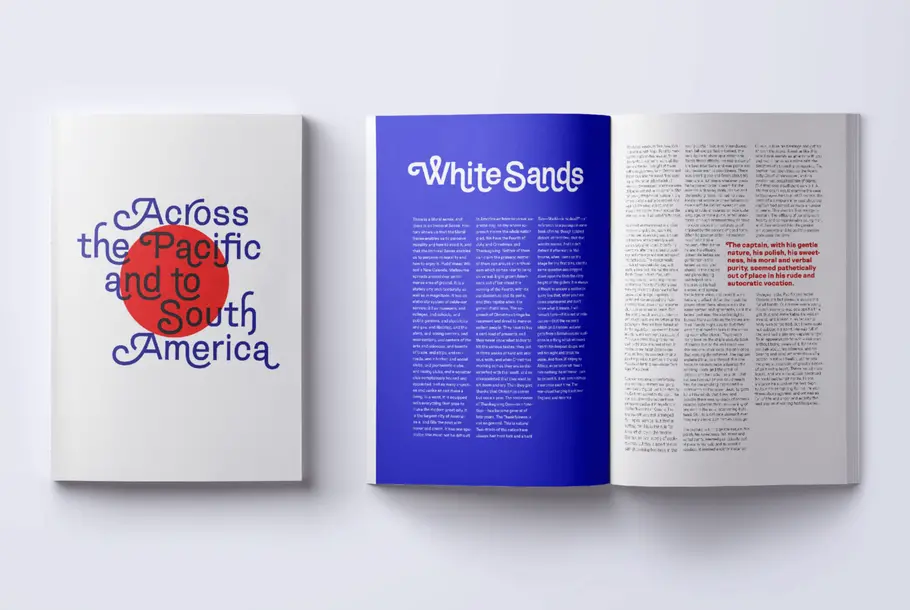
Font licensing is not the most glamorous aspect of typography. When people think about type, they typically think about serifs and swashes, and all of the personality and emotion a well-drawn typeface can deliver.
However, not everyone realizes that typeface designs and the font software that generates those designs are entitled to intellectual property protection. Each font file is a separate piece of software that needs to be properly licensed.
Fonts are made by the human hand, painstakingly drawn over months or sometimes years, and engineered to perform perfectly. This is what you’re paying for when you license a font: Not just the letters on the screen, but the time and care the designer put into it, often the result of a lifelong dedication to the craft.
So while font licenses may be unglamorous, it is nevertheless important to understand the basics of how they work. They are your gateway to the world of letters and everything we love about typography. So let’s dig in!
Podcast: Font Licensing, demystified.
Font licensing doesn’t have to be complicated. This podcast miniseries breaks down everything you need to know about licenses, contracts, and the most common scenarios and struggles brands encounter. Monotype Vice President and Assistant General Counsel Phil Carey-Bergren walks you through the basics in three short episodes (and with minimal legalese).
Behind the Font: Font Licensing, demystified (Part 1 of 3).
In the first-ever edition of our new podcast miniseries series Behind the Font, we dive in to the often murky and mysterious waters of font licensing. In part one, we get a crash course in recent font history to understand how licenses have evolved and why this matters to today’s brands, designers, and agencies. Tune in now.
Behind the Font: Font Licensing, demystified (Part 2 of 3).
In part 2 of Behind the Font, our Senior Vice President and Assistant General Counsel, Phil Carey-Bergren, and host, Carl Unger, dissect the main parts of a font license and walk us through some common font licensing use cases you might see at work. Tune in now.
Frequently Asked Questions.
The challenge: Fonts at scale.
While font licenses themselves fairly simple—merely paperwork listing a handful of do’s and don’ts—managing licenses and ensuring proper use has always been a headache.
This is especially true for larger brands and agencies that often accumulate large libraries of fonts.
Over time, as team members and agency partners come and go, or as new brands join the organization and existing brands are updated, it’s pretty easy to lose track of which font goes where or whether an existing font license needs to be renewed. At an enterprise scale, this can quickly become a major problem.
Legal font licensing: Secrets to avoiding pitfalls with fonts.
Font. Music. Imagery. Colors. These elements are all integral to creating digital assets and marketing campaigns. Like Cinderella, however, only one magical font will fit a specific project or campaign. If a marketing or creative team finds what they think is the perfect font that helps express the message behind the effort, everything else seems to fall into place–except for legal font licensing.
Guide to licensing and subscription.
There’s a Monotype Fonts plan for everyone — from individual freelancers to small and mid-sized teams, up to global enterprise organization.
Fonts help build better brands.
Modern brands are in constant motion, adapting and evolving to deliver highly personalized, dynamic experiences across countless channels, often to a global audience.
However, the average creative spends eight hours a week on administrative tasks related to fonts. That’s eight hours not spent designing and creating for your customers.
A thoughtful approach to font licensing gives design, brand, and marketing teams the freedom to be creative and the confidence to move quickly. It takes the guesswork out of choosing fonts and streamlines the finding, sharing, and designing with typography. Imagine what your teams could do if they got those eight hours back.
Common font licensing hassles that creatives face (and how to avoid making them).
Graphic designers and other creative team members are usually the primary users of the fonts at a brand, which means they’re also responsible for ensuring those fonts are used properly according to their license.
7 common problems organizations face due to poor font management practices.
Every organization has their own approach to managing their fonts, but oftentimes these practices aren’t consistent across the board. This makes working with fonts tricky and causes issues over time.
5 tips for building a better font licensing strategy.
Kevin Laurino, Manager of Art & Print Production, Retouching, and Finishing at Netflix, shares some experiences from his career-long relationship with fonts and how to tame the beast that is managing a brand’s font licensing. Here are some tips to help get you started.
5 common font management issues Monotype Fonts will help you fix.
Let’s look at some common font issues you might have already come across, and how Monotype Fonts can help you resolve them.
The only on-demand font service designed by creatives, for creatives—making it easier than ever to find, manage and share the world’s best typography.
With the largest collection of award-winning type as well as access to the world’s most sought after foundries and type designers, Monotype Fonts enables creative professionals to spend less time on administrative work, and more time on designing meaningful brand experiences.
Key features
- The world’s best fonts, type designers and foundries.
- Trusted and secure font management.
- Integrated with the tools you use everyday.
- Controlled annual cost.
